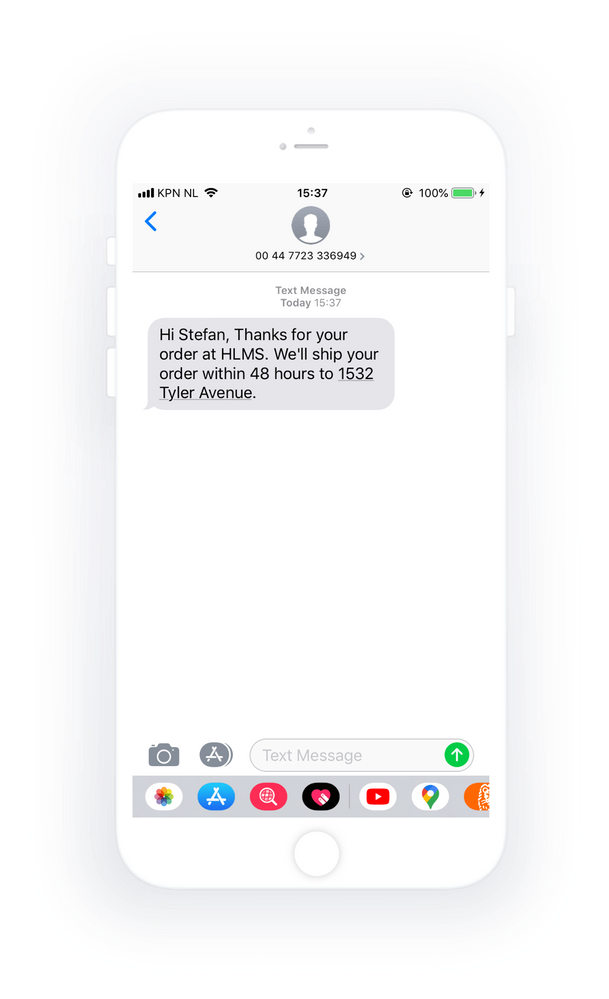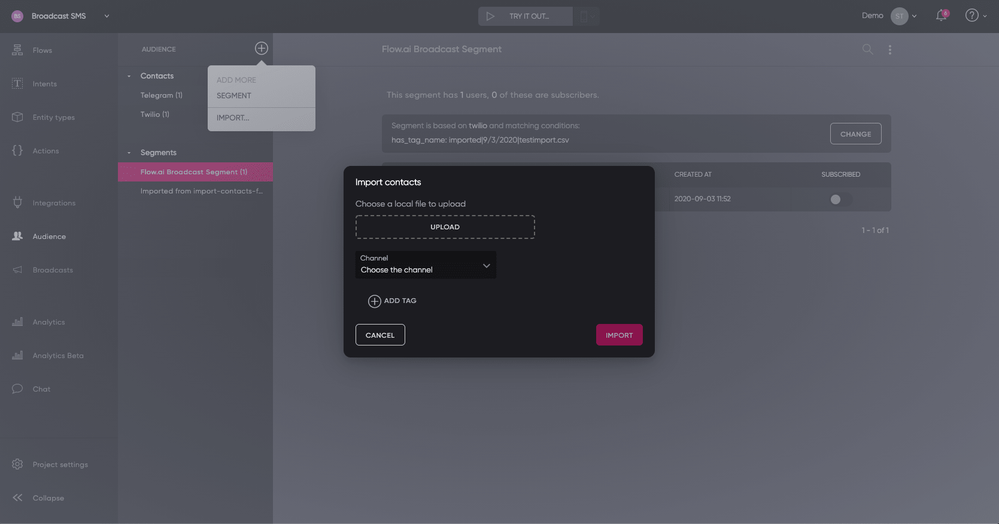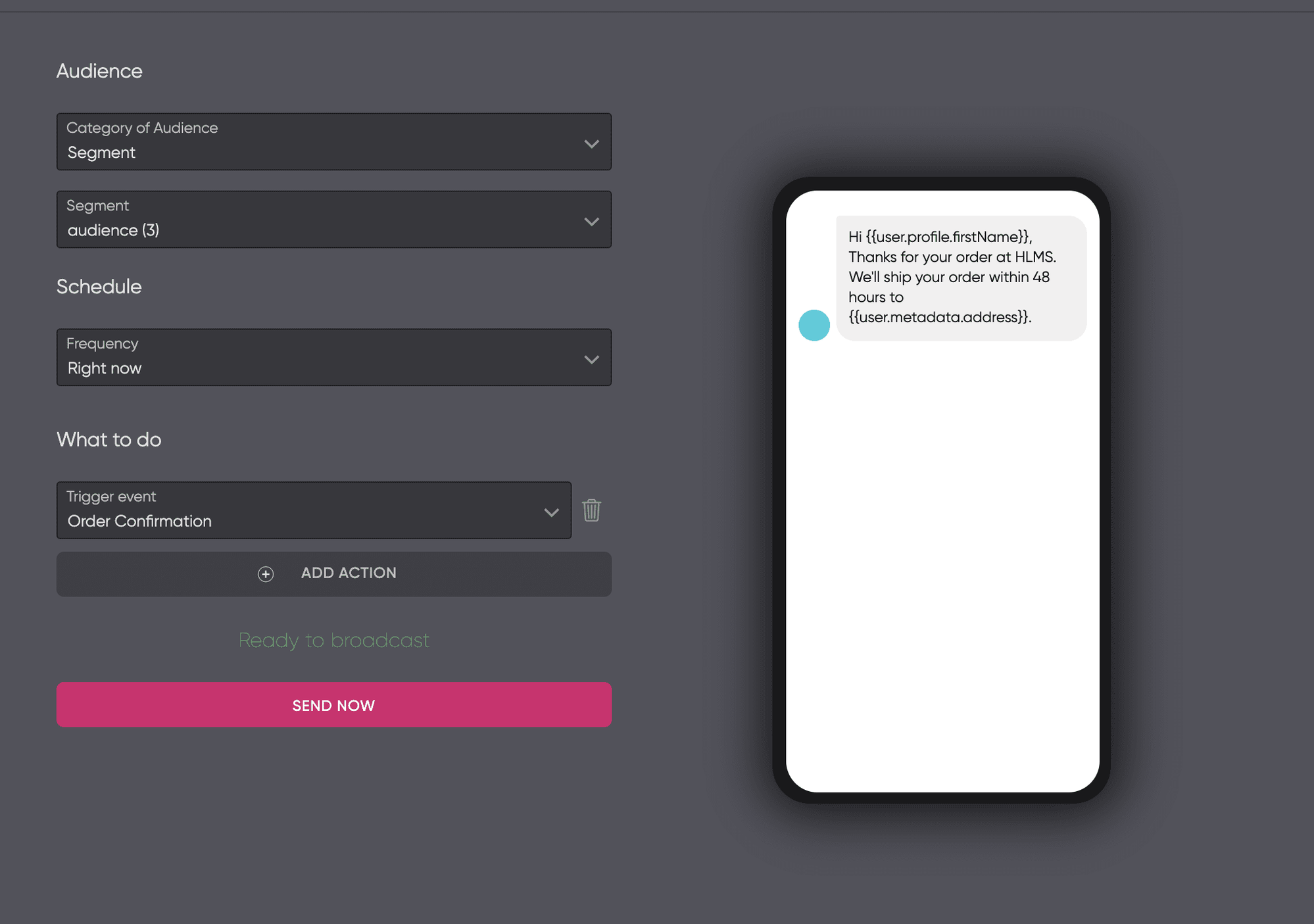Flow Designs: Import contacts
Ever thought about uploading a list of contacts so you can broadcast a message? If not, you should. It's a great way to engage with your customers in their favorite messaging channels. Think about receiving a WhatsApp message or SMS when you've processed a new order. In this guide, we explain how to upload a list of contacts and send a broadcast.

If you already have a modern CRM system in place, you can even automate more. With webhooks and our broadcast API, you can even automate the complete process but for now, let's focus on uploading a list of contacts by:
- Creating a CSV file.
- Importing your contacts
- Using import fields in the message content
In our article about the broadcast feature, we will dive deeper into the broadcast functionality.
Create a .csv file
To import your list of contacts, make sure your file with contacts is a .csv file. Within that .csv file, the comma will be seen as the separator. Your file must include:
Required fields
The .csv file that you want to upload should have at least the following five required columns:
- full name
- phone number
- first name
- last name
- language
Additional fields
In addition to the required field, you have the option to add additional fields that you can use in the content of your messages. These fields will be stored as metadata. Let's think about the broadcast after an order. In that case, you might want to include fields like an address.
Make sure to include the text 'metadata' in your header as indicated below.
full name,phone number,first name,last name,language,metadata mykey
Finn Haley,+380997605518,Finn,Haley,NL,myvalue
Import your contacts
You can now import your file. Head over to the audience section, click Plus icon, and select Import. You can select and upload your .csv file. Then, pick a channel and click Import.

Use import fields in the message content
The next step is to use the content of the uploaded file to tailor the content of each message. We can do that by using string templates.

To use string templates, you can use double curly brackets to open "{{" and double curly brackets to close "}}". You can pick some of the following options:
{{user.profile.firstName}}
{{user.profile.lastName}}
To use the additional fields you should include metadata:
{{user.metadata.address}}
You can now schedule your broadcast from the broadcast section.
Updated about 2 years ago